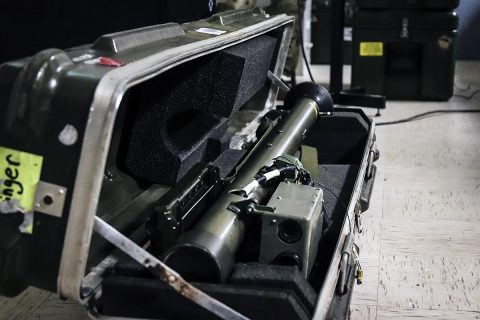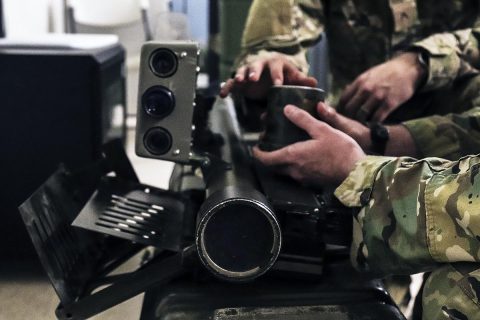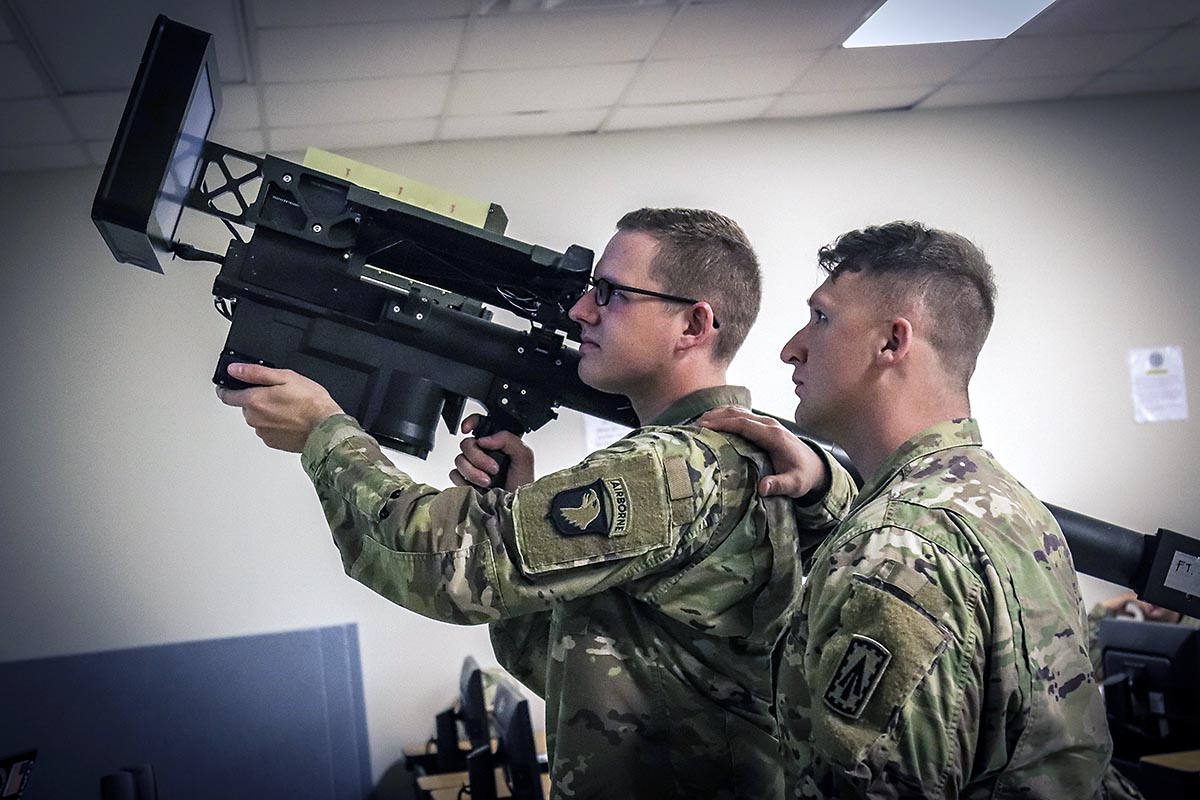Written by Maj. John Moore
3rd Brigade Combat Team, 101st Airborne Division (AA) Public Affairs


Fort Campbell, KY – If it flies, it dies.
That’s a motto occasionally used throughout the air defense community. Air defenders, sometimes called “duck hunters” in a tongue-in-cheek manner, have an increasingly important role within the Army as it shifts focus from counterinsurgency operations to preparing for a more complex decisive action fight against a near-peer opponent.

Soldiers from 3rd Battalion (Airborne), 4th Air Defense Artillery Regiment, 108th Air Defense Artillery Brigade, stationed at Fort Bragg, NC, conducted Stinger missile familiarization with Soldiers assigned to 3rd Brigade Combat Team (BCT), 101st Airborne Division (Air Assault) at Fort Campbell, KY, February 4th-7th, 2019.
The Stinger missile system is a man-portable surface-to-air missile system (MANPADS) which entered military service in 1981, and provides a lightweight short-range air defense capability against low-altitude airborne targets.

It is intended to be employed in an expeditionary manner; particularly useful in restricted terrain and heavy vegetation. The system and its associated capabilities are important to a maneuver unit, as they provide the capability to track and destroy airborne threats such as fixed or rotary-wing aircraft, and some unmanned aircraft systems.
“It’s definitely interesting, knowing that the [Air Defense Artillery] branch is really reinventing itself and revaluing itself as a member of the Army as a whole, especially here in a maneuver environment,” said 1st Lt. Benjamin Feithen, 3rd Brigade Combat Team Air Defense Officer. “People are seeing our true value again now that we’re leaving a COIN environment, and going back to a decisive action environment.
Not only was the training beneficial for Rakkasan Soldiers as they conducted virtual training in the Kinnard Mission Training Complex, but it also helped to build Air and Missile Defense capacity for multi-domain operations, ensuring that air defense forces are trained and ready.
The training consisted of a visual aircraft identification portion, where Soldiers were trained and tested on their ability to identify various types of fixed and rotary-wing aircraft without the use of radar or advanced optics, followed by hands-on training on a virtual Stinger system. During the virtual training, the Soldiers were required to detect and engage target aircraft.

“The infantrymen and scouts had an opportunity to get some trigger time in the KMTC,” said Feithen. “After familiarization on the systems, the soldiers were able to find and destroy targets. Having Soldiers that aren’t air defenders but who are trained on the MANPADS helps to augment the limited air defense soldiers attached to the BCT.”
As the BCT prepares to deploy to the fictional country of Atropia during JRTC, it’s not uncommon for enablers from all Army components to conduct training with the unit they’ll support prior to the rotation. Conventional forces, various combat service support units, and special operations forces frequently augment a BCT. These types of training opportunities mirror the supported and supporting relationships that may occur during combat or operational deployments, and ensure that the Army is ready to fight tonight.



